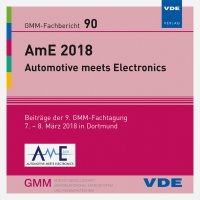Clustering of real BEV driving data with subsequent driving cycle construction using Markov chains
Conference: AmE 2018 – Automotive meets Electronics - 9. GMM-Fachtagung
03/07/2018 - 03/08/2018 at Dortmund, Deutschland
Proceedings: AmE 2018 – Automotive meets Electronics
Pages: 6Language: englishTyp: PDF
Personal VDE Members are entitled to a 10% discount on this title
Authors:
Tewiele, Sarah; Driesch, Patrick; Weber, Thomas; Schramm, Dieter (Chair of Mechatronics, University of Duisburg-Essen, Duisburg, Germany)
Abstract:
A big step towards realistic consumption specification of motor vehicles is being made with the introduction of the „Worldwide harmonized Light vehicles Test Procedure (WLTP)“ within the European Union. Battery electric vehicles (BEV) are also included in this new test procedure. However, the driving cycles of the WLTP are not specifically developed for electric vehicles and thus may not reflect the actual driving behavior presented by drivers of actual electric vehicles. A battery electric powertrain especially differs in its acceleration capacities from conventional powertrains, which is largely not considered in the development of driving cycles thus far. Within this contribution three BEV driving cycles are presented, which are based solely on real driving data from electric vehicles. The database includes more than 60,000 recorded trips with a total mileage of almost 368,000 km. The cycles were constructed using a method based on Markov chain theory. First, the real data is clustered by a map-matching method according to the road type. For validation and evaluation of the generated cycles various target parameters are used. Additionally, the constructed BEV-cycles will be compared to other cycles from the literature.


